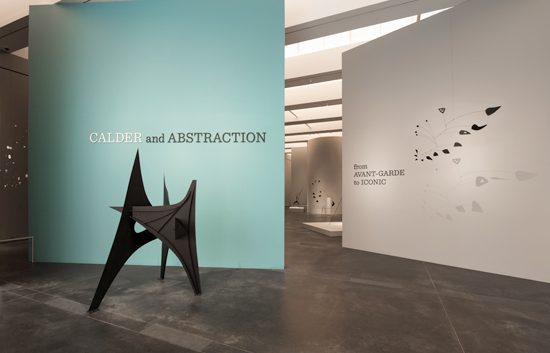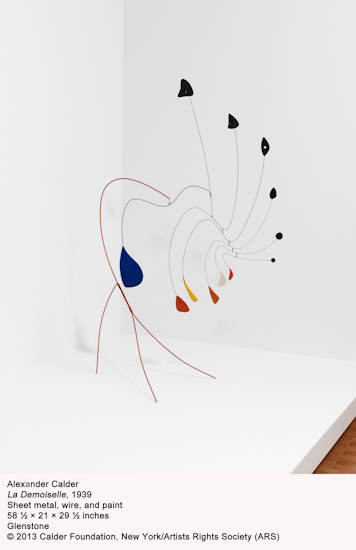The Magnificent Universe of Alexander Calder





Photos are the courtesy of Calder Foundation, New York, Fredrick Nilsen
The simplest forms in the universe are the sphere and the circle. I represent them by discs and then I vary them. My whole theory about art is the disparity that exists between form, mass, and movement.
– Alexander Calder
On November 20, 2013 we were invited with other members of the press to a preview of the new Alexander Calder exhibit “From Avant-Garde To Iconic” at the Los Angeles County Museum of Art (LACMA).
Alexander S. C. Rower, grandson of Calder and chairman of the Calder Foundation, offered his expertise and insights. Wearing a necklace designed by his grandfather, Rower provided perspective into Calder’s work.
In in our approbation of Calder’s work, we find ourselves in good company. Albert Einstein attended Calder’s legendary 1943 exhibition at the Museum of Modern Art in New York. He was captivated by Calder’s 1934 motorized creation: “A Universe,” spending 40 minutes intently contemplating it.
Calder believed that Einstein was attempting to quantify the cycles of movement in the sculpture, of which there were 90!
A case could be made that Calder was the Einstein of art. He opened new artistic vistas, offering a kinetic and unpredictable three dimensional perspective to avant-garde work. Previously, art had been primarily two dimensional, static and predictable. A Calder structures are alive and timeless, always in tune with the “currents,” of both time and place.
Calder melded science and art, disciplines he studied in depth. This undoubtedly accounted for Einstein’s fascination with Calder’s work. Literary figures were drawn to his work, with Jean Paul Sartre famously musing on the Calder nether world between the animate and the inanimate.
One viewer proclaimed: “The exhibit is one of the most momentous in the museum’s history, a true tribute to Calder, whose sculpture, “Three Quintains” (or “Hello Girls”), has been the face of the museum since it opened in its present location in 1965.”
(This sculpture is in the sculpture garden.)
The mise-en-scene emphasizes the perception of Calder’s works as visions of Miro and Mondrian in 3-D. The installations at the exhibition are “paintings in motion” and provide an overview of this man who defied tradition and stepped into a new dimension to make his mark.
So, what shaped this titan of the art world? His grandfather and father were both accomplished sculptors. His mother was a renowned artist. Paradoxically he earned a degree in mechanical engineering and studied at the Art Students League in New York, where he met Thomas Hart Benton.
During his seminal sojourn in Paris from 1926 to 1933, he was caught up in the artistic ferment of the time. He was befriended and inspired by artists Marcel Duchamp, Joan Miro, Piet Mondrian, Jean Arp, Wassily Kandinsky and Fernand Leger.
As a result of these influences, Calder embodies a cross-pollination of Modern, Abstract, Surreal, Bauhausian and Constructivist styles.
He was certainly his own man. He created Cirque Calder, a miniature circus with wire figures, it is a sensation. He continued to evolve, developing revolutionary techniques: hanging structures, moving parts driven by air currents and motors (coined “mobiles” by Duchamp) and self-supporting sculptures (dubbed “stabiles” by Arp).
With the rise of Nazi Germany he returned to America. Many painters who knew him in Paris joined him. What followed was a long, fruitful career during which he created over 20,000 pieces, becoming one of the most innovative artists of the 20th century.
Entering the exhibit, you encounter the world as visualized by this artistic giant. Calder works embrace the contrasts of the universe: they incorporate precision and balance yet express motion and change. Has Calder encapsulated the ingredients of all life? See for yourself, the exhibit is open until July 27, 2014!The Calder installation was designed by architect Frank O. Gehry, a long-time admirer of Calder. The exhibition is under the aegis of Senior Curator Stephanie Barron.

